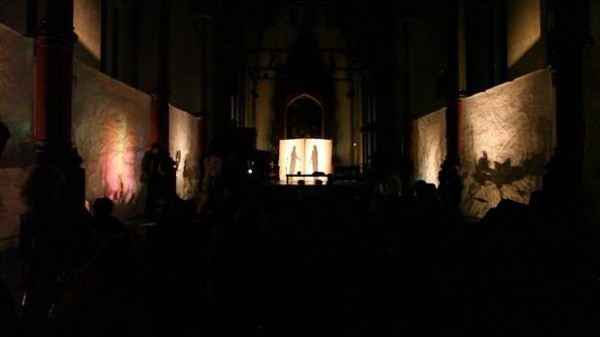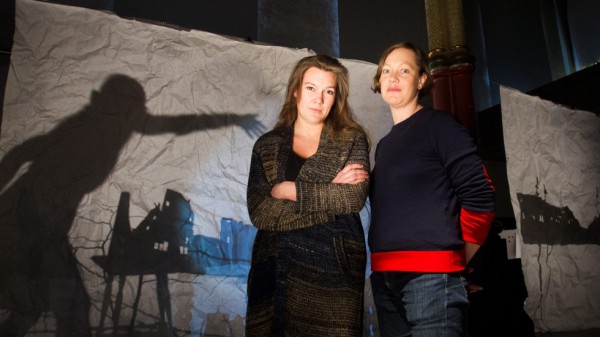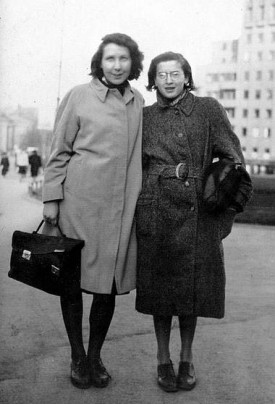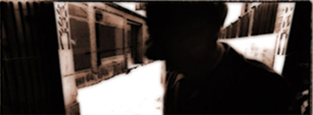Lidelsens Jubel
Nattens Lys | Lidelsens Jubel
[Light of Night | Shout of Tribulation]

The Cowork – Nattens Lys
An Interdisciplinary project based on the poetry of Gunvor Hofmo.
The project consists of four parts:
1) Recording of poetry readings. Recordings of readings made by persons who has an relationship to Hofmo poetry. During the spring 2014 more than 150 persons responded to the announcement in newspapers, radio and social media and came to the temporary sound recording studios. The studios were arranged in churches, museums, and litterature houses in Oslo, Trondheim and Bergen. The readers brought one, two, three or more of their favourite poems. More about this in Norwegian under “Innlesningsaksjon”.
2) An audiobook with new recordings in addition to recordings of the poet herself reading 14 poems. This was recorded in 1969 by the Norwegian Broadcast Company NRK. The readings will be composed into a musical composition for voice, organ and piano by Liv Kristin Holmberg. More about this in Norwegian under “Lydbok”.
3) A durative concert installation/ wake with music, the recorded readings of the poems and shadow theatre from sunset to sunrise in Jacob Church Oslo: Saturday the 11th at 20.00 till sunday the 12th April 2015. More about this in Norwegian under “Scenekunstforestillingen”.
4) A Vigilia Mass, in Trondheim, November 11th, 2018. Music – Lidelsens Jubel – for Countertenor (alt. Mezzosoprano), mixed choir (SATB) and church organ, composed by Stefan Thorsson
Nattens Lys is initiated and lead by Liv Kristin Holmberg and Christina Lindgren and supported by The Norwegian Art Council, The Audiovisual Fund, The Norwegian Freedom Of Expression Foundation, The County of Oslo, Fund for Performing Arts.

Gunvor Hofmo
Gunvor Hofmo was born in 1921 and lived all her life in Oslo until her death in 1995. Her first poem appeared in print in 1936; early in her life she demonstrated and realised that the pen was indeed a strong weapon. She experienced the Nazi invasion of Norway and the way it affected people. She saw the effects of war in Europe. She witnessed how two uncles and an aunt were all identified as suspects, arrested and transported to camps in Germany. One uncle and her aunt died just before peace was declared, while the other uncle (Rolf Hofmo) was rescued and evacuated by the Swedish Red Cross in their Bernadotte busses operation. Gunvor Hofmo saw her friend, Ruth Maier, arrested, marched aboard SS Donau on 26 November 1942 and deported to Auschwitz. A time filled with fear of what humans were able to do to their fellow human beings and shock over what they actually did. Evil, betrayal, terror. Gunvor Hofmo captured all this with her pen and cried out in despair for justice and dignity.
She wrote mainly poetry, a total of more than 700 poems published in 19 collections. She is considered to be one of Norway’s foremost modernists. Jan Erik Vold, himself a poet and the author of Gunvor Hofmo’s biography (“Mørkets sangerske” 2000 ) calls her work “the strongest lyrical writings by any woman in Norwegian”.
Gunvor Hofmo spent 17 years of her life in the psychiatric hospital at Gaustad, where she was admitted after the war. In a time when society wanted to forget the horrors of war, Gunvor Hofmo found it impossible to forget. In a time when Norwegians saw themselves as victims and wanted to look ahead in an attempt to lick their wounds, she looked the evil of mankind straight in the eye. She insisted that this evil had to be met with its own counterforce: human dignity. In a time when the aim was rebuilding, Gunvor Hofmo feels that every single building block has been shattered. In a time when the focus is on material values, Gunvor Hofmo insists on reminding us of the responsibility we as human beings have for each other.
I want to go home
I want to gaze towards the stars
over the night-shining sea
that is singing, singing:
Wonderful is the night,
wonderful is the day, not one of them will die!
I want to go home to the humans –
like a blind man
is transilluminated in the dark
by sorrow´s starlight
Orginally: Jeg vil hjem til menneskene. From the collection Jeg vil hjem til menneskene (1948). Translation by Howard Medland

The Work – Lidelsens Jubel
Music based on a life in pain and vulnerability, music based on the experience that your loved one’s been taken from you – compulsory transferred – and murdered in a concentration camp, music based on the subsequent words as the only remaining carrier of meaning in an apparently dejected, impossible life – how would you go about when asked to set the poetry of Gunvor Hofmo to music?
One possible starting point could be to force yourself into the painful pictures that the words bring to the fore and hence pander to all the subdued power, which seethes underneath the surface. Another mode of thought circles round the notion of time; the music should be given enough time to slowly evolve and thus emphasize eventual contemplative qualities and simultaneously point out the painfully irreversible in every person’s deeds and experiences. In these line of thoughts a third incentive appears: if artists regard their contributions and comments to Hofmo’s words as a testimony and thus a warning to our own time. Simultaneously, it is well worth notifying that the music – as being the so called prolonged arm of words – under no circumstances will fall into a distant, troublesome condition of incurable resignation, yet instead create changing sonorous scenarios in an arguing musical language, where voices and instruments express vitality and power.
The initiators of the project Nattens Lys commissioned an acoustic piece for countertenor (or mezzosoprano), mixed choir (SATB) and organ. In the church settings the liturgical references are unavoidable, and these external conditions would most certainly generate some insistent thoughts and questions for any non-religious composer.
If I should make an attempt to a summary of the sounding outcome, the most distinctive feature is probably its constant motion – a sort of chameleonic condition – where notions of centre and periphery become crucial, where scents of history and tradition are juxtaposed with nuances of the modern, placed upon a liturgical bed. The connotations to the tradition of church music consciously don’t spill over but they are at the same time not sent off to the corners of avoidance. Instead they ought to be considered as a carrying fundament underneath a mix of expressions, e.g. Nordic folk melodies alongside radical modernistic traits.
At a macro level, scents of mysticism are liberated; here you will see indications of something larger, find traces of something higher, via the slowly evolving and apparently simple, meditative and introspective character of the music. Simultaneously, on a detail level, connections to more abstract, modern resonance surfaces are clarified. Here you will find a search and strive for more experimental expressions, i.e. conscious distortions and unexpected turns, which will render a sort of wryness. This micro perspective will – in varying magnifying grades – hopefully contribute richness to the traditionally conditioned texture. And within this combination, in this wholeness, I think that the music will work its path into the words and find itself – if Hofmo’s words constituted the consequence and therefore the essence of her life, then my primary hope is to create an accompanying music about the essence of music.

Nine Movements
- Til Smerten
- Mørket er skapt
- Men natten
- Jeg vil hjem
- Hva vet du
- Hvem er jeg?
- Jeg synker
- Til stillheten
- Mørk Kristus
Duration
65 min.
Links
The history of nordic women’s literature
Berlin – May 2016

